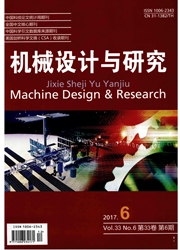

 中文摘要:
中文摘要:
为了解决产品制造、安装、运行等流程中产生的问题,将裁剪应用于流程问题解决,提出了流程问题解决过程模型。流程问题解决过程模型分为四个阶段:流程定义、流程分析、流程问题解决和概念具体化。流程定义阶段,通过总结和归纳大量实例,建立了流程完整的定义。流程分析阶段,首先绘制流程图,其次在流程图的基础上,对流程图中的每一步操作进行了操作图示绘制及流程功能分析,最后利用因果分析确定要裁剪的操作。流程问题解决阶段,通过流程裁剪方法进行操作裁剪,并对裁剪问题存在性做出判断,若存在裁剪问题,则应用冲突解决原理来解决。概念具体化阶段,将原理解转换成特定的方案解。并以饮水机为例对提出的过程模型进行了验证。基于裁剪的流程问题解决过程模型能够有效的针对已有流程改进和流程创新,有利于流程问题解决的效率提高。
 英文摘要:
英文摘要:
To solve the problem arising in the process of manufacturing, installation and operation of the product, trimming was applied to solve process problem, and put forward problemsolving process model of process. The problem-solving process model of process is divided into four stages: process definition, process analysis, process problem-solving and conceptual modeling. In process analysis phase, draw process chart is first drew, secondly based on the process chart, every operation in the process chart are drew to analysis process function, and ultimately the causal and effect analysis is used to determine the operation trimmed. In problem-solving of process phase, operation is trimmed by process trimming, and the existence of trimming problems is first evaluated. If there is trimming problem, it will apply the conflict solving principle to solve the trimming problem. In conceptual modeling phase, principle solution will be convert to specific solutions. A water dispenser case study shows the feasibility of the proposed process model. The problem-solving process model of process based on trimming can effectively make process improvement and innovation, and improve the efficiency of the problem-solving of process.
 同期刊论文项目
同期刊论文项目
 同项目期刊论文
同项目期刊论文
 期刊信息
期刊信息
